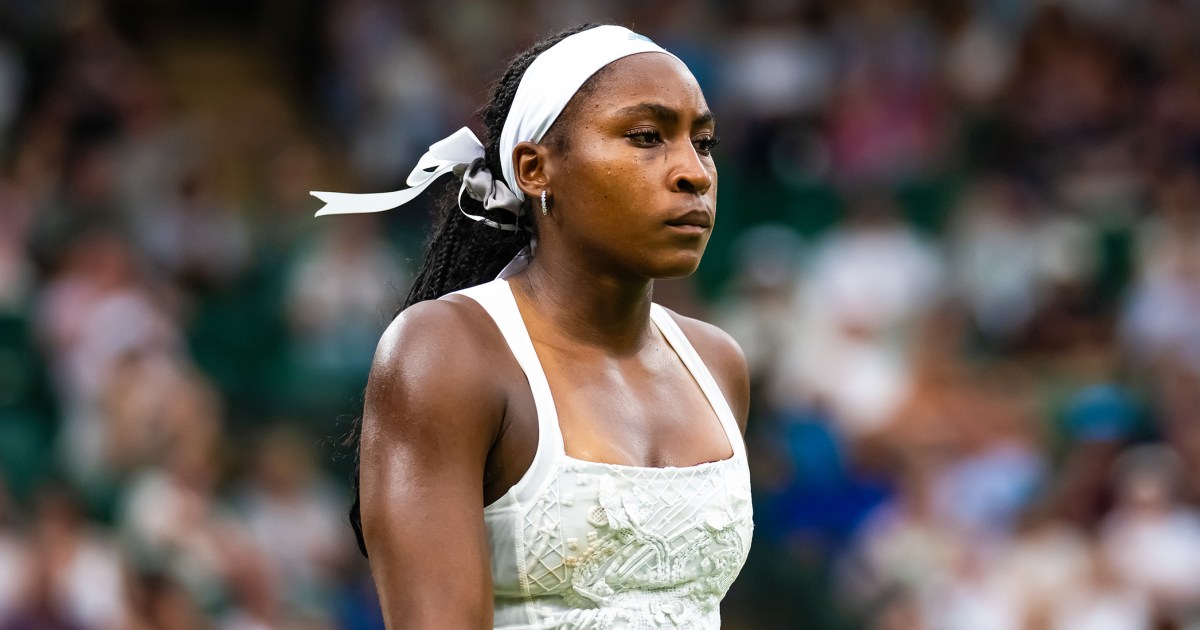The hallowed grass courts of Wimbledon have, in a surprising turn of events, become the stage for an unprecedented series of early departures from many of the world’s top tennis stars. From rising sensation Coco Gauff to the formidable Alexander Zverev, the initial rounds of this prestigious Grand Slam have been marked by a cascade of unexpected tennis upsets, leaving fans and pundits alike grappling for explanations. This sudden exodus of elite talent has prompted one top player to describe the situation as “kind of shocking,” underscoring the unusual nature of these proceedings at one of tennis’s most revered tournaments.
Typically, the opening stages of a Grand Slam serve as a relatively smooth passage for top-seeded players, allowing them to acclimate to the tournament’s unique atmosphere and refine their grass-court game. However, this year’s Wimbledon has defied such conventions, witnessing a dramatic deviation from established patterns. The swift elimination of high-profile players who are consistently expected to contend for the title has ignited widespread discussion, shifting the narrative from predictable progression to a compelling exploration of why so many favorites are faltering early.
One primary factor contributing to these surprising results is undoubtedly the distinctive and often unforgiving nature of the grass court itself. Wimbledon’s slick, fast surface demands a very specific skill set and tactical approach, often favoring aggressive play and quick reactions. Players accustomed to the slower hard or clay courts can find the transition challenging, and even the slightest misstep or lapse in concentration can prove fatal. Compounding this is the immense pressure inherent in competing at a Grand Slam; the weight of expectation on top players can be crushing, potentially leading to performance anxieties that manifest in uncharacteristic errors.
Beyond the unique playing surface, the evolving landscape of professional tennis also plays a significant role. The sport’s talent pool has deepened considerably, with a new generation of fierce competitors consistently challenging the established hierarchy. These emerging talents, often unburdened by the same level of expectation, arrive at major tournaments with nothing to lose and everything to gain. Their fearless approach and relentless pursuit of victory can often catch even the most seasoned Grand Slam champions off guard, proving that no position in the rankings is truly safe.
Moreover, the inherent unpredictability of high-stakes tennis competition cannot be overstated. Even the most dominant players can have an off day, and in a format as unforgiving as a Grand Slam, a single subpar performance can lead to an early exit. Factors such as minor injuries, fatigue from a demanding tour schedule, or even a momentary lapse in mental fortitude can tip the scales in favor of a lower-ranked but highly motivated opponent. These slender margins are amplified on Wimbledon’s fast grass, where momentum can shift dramatically in an instant.
These early tennis upsets, while shocking, have undeniably created a more open and electrifying field for the remainder of the tournament. With several top contenders already out, the path to the finals appears far less predictable, setting the stage for unexpected rivalries and potential Cinderella stories. This unprecedented situation promises an unpredictable and exhilarating journey towards the coveted Wimbledon title, ensuring that every match from here on out will be watched with heightened anticipation and intrigue.
The implications of these early losses extend far beyond individual player performances; they prompt deeper discussions about player preparedness, the critical role of mental fortitude under pressure, and the dynamic, ever-evolving nature of professional tennis. As Wimbledon progresses, analysts will continue to dissect these surprising outcomes, seeking to understand whether this is an anomaly or a sign of a fundamental shift in the sport’s competitive balance, ultimately reshaping future strategies and expectations for elite players on the Grand Slam circuit.
Discover more from The Time News
Subscribe to get the latest posts sent to your email.





